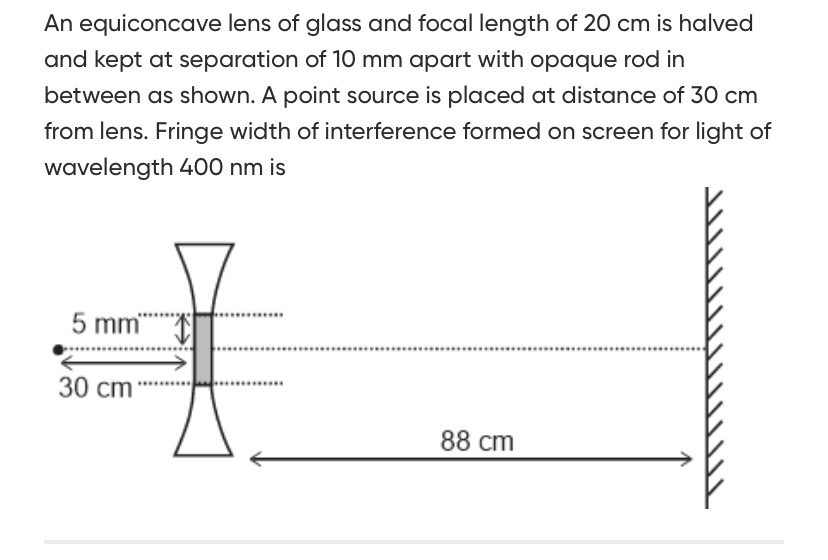Question
Question: An equiconcave lens of glass and focal length of 20 cm is halved and kept at separation of 10 mm apa...
An equiconcave lens of glass and focal length of 20 cm is halved and kept at separation of 10 mm apart with opaque rod in between as shown. A point source is placed at distance of 30 cm from lens. Fringe width of interference formed on screen for light of wavelength 400 nm is

0.04 mm
Solution
The problem describes a setup analogous to Young's double-slit experiment where the two halves of an equiconcave lens act as sources of coherent virtual images.
-
Image Formation: The lens formula is v1−u1=f1. Given: Focal length f=−20 cm (equiconcave), object distance u=−30 cm. v1=f1+u1=−20 cm1+−30 cm1=60 cm−3−2=60 cm−5=12 cm−1 The virtual images are formed at v=−12 cm from the lens.
-
Separation of Virtual Sources: The lateral magnification m=uv=−30 cm−12 cm=52. The two halves of the lens are separated by 10 mm. This separation directly translates to the separation of the virtual sources (d) because the point source is on the principal axis. Thus, d=10 mm.
-
Distance to Screen: The virtual sources are at 12 cm in front of the lens. The screen is placed 88 cm behind the lens. The total distance from the virtual sources to the screen is D=12 cm+88 cm=100 cm.
-
Fringe Width Calculation: The fringe width β is given by β=dλD. Given: Wavelength λ=400 nm=400×10−9 m. D=100 cm=1 m. d=10 mm=0.01 m. β=0.01 m(400×10−9 m)×(1 m)=10−2400×10−9 m=400×10−7 m=4×10−5 m Converting to millimeters: β=4×10−5 m×1 m1000 mm=0.04 mm
